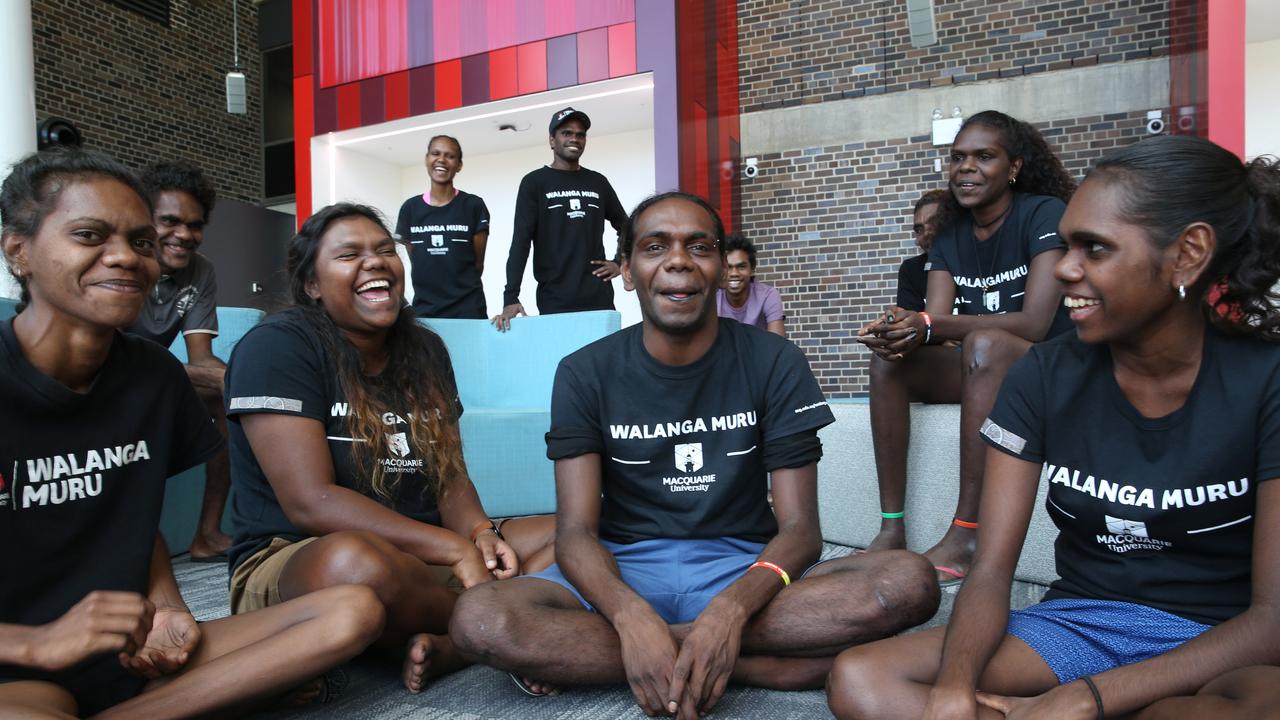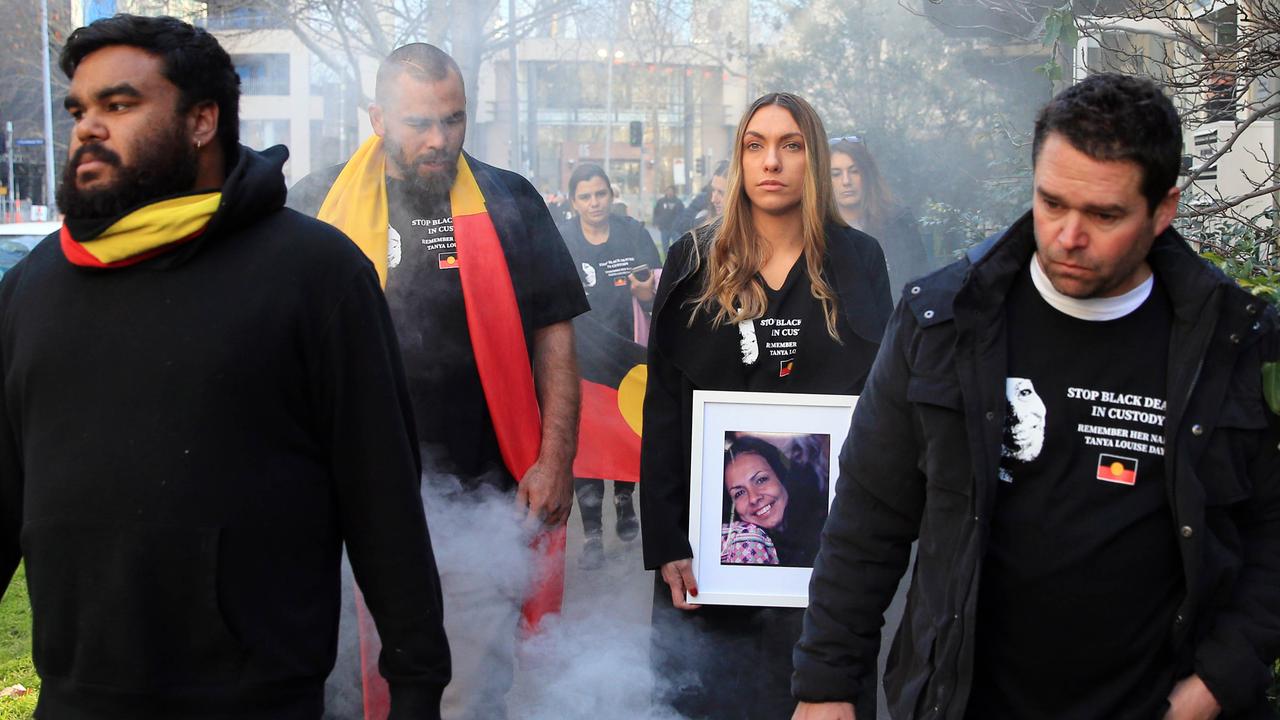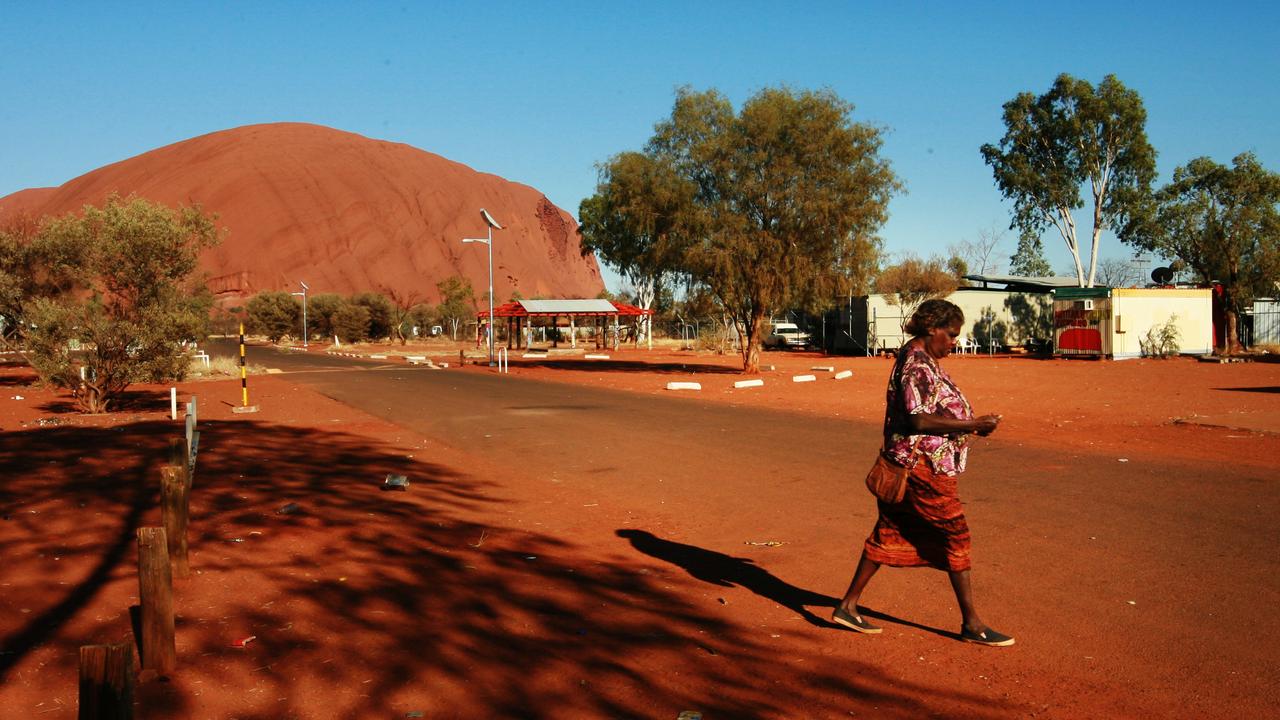The truth about how Aboriginal people are treated in Australia
Many Aussies have preconceptions about the Aboriginal people and why they’re more likely to be in jail. Here is how they are treated.
Ever since the Black Lives Matter protests have become a global phenomenon, debate has raged about Australia’s own history.
“Breaking the law and going to jail for it has absolutely nothing to do with racism,” one person wrote in the comments section of a news.com.au story, as Australia’s own protests got underway.
“If you do the crime, you do the time. Black, white, rainbow, yellow whatever … shouldn’t matter.”
Many Australians believe everyone in Australia is treated equally but are they really?
Here is the truth about how Aboriginal people are treated in Australia.
PAID LESS IN ALMOST EVERY DEMOGRAPHIC
Back in the early 1970s, Aboriginal people living in remote areas were being paid as little as 19 per cent of the non-Indigenous median income, research has shown.
Those living in major cities did a little better, they were paid between 33 per cent and 43 per cent of the per capita disposable income of non-Indigenous Australians.
More recently, Indigenous incomes have increased over the years, particularly in major cities where about 37 per cent of the Indigenous population lives.
But about 20 per cent of Aboriginal people in the major cities are still estimated to live in poverty, a 2016 report from Australian National University’s Centre for Aboriginal Economic Policy Research found.
The situation is much worse in remote areas where more than half the Aboriginal people still live in poverty.
In these areas Indigenous income is still on average just 44 per cent of the median non-Indigenous income.
Previous research has found that Indigenous incomes “for almost every demographic, geographic, education and employment combination” are lower than for non-Indigenous Australians. The exception is incomes for Indigenous women with a university degree.
In 2016, the median Indigenous income for those living in a major city was $647 per week, compared with just $389 per week in very remote areas.
About 10 per cent of the Indigenous population also received no income at all and that includes government payments. It’s unclear how these people survive.
RELATED: The white lie Australians tell themselves
RELATED: George Floyd issue is not a world away from Australia

Aboriginal and Torres Strait Islander Legal Services executive officer Roxanne Moore told news.com.au that many of the problems Indigenous people still face stem from the legacy of their treatment when the British first arrived in Australia.
“From early on in Australia, there were policies dispossessing people from our lands and moving them on to missions,” she said.
“There was also slavery in Australia, many, including my own great grandmother were forced to work as domestic servants after they were taken from their families.”
“Stolen wages” was a common practice with Indigenous people forced to work and having their pay taken off them.
“Today our families still experience poverty, which is connected to high incarceration rates and black deaths in custody,” Ms Moore said.
LOCKED UP MORE OFTEN
Indigenous Australians are the most incarcerated people in the world and no, it’s just not because they are committing crimes.
Recent examples have shown other factors are at work.
Ms Moore pointed out that Aboriginal women in Victoria were 11 times more likely than non-Indigenous women to be arrested for public drunkenness.
In the case of Tanya Day, 55, she was arrested after the train conductor found her asleep on the service travelling from Bendigo to Melbourne in 2017.
She later died after hitting her head several times while in custody. The coroner found Ms Day was “not treated with dignity and humanity” and the train conductor’s decision to call the police was influenced by “unconscious bias”.
“She was the only sleeping passenger he has ever called police to remove from the train, although he comes across three sleeping passengers a week,” the coroner wrote in her findings.
The coroner also noted the same police officers treated Ms Day differently to another severely intoxicated woman they attended to later the same day who was not Indigenous. She was driven home, not to the police station, and was not arrested for being drunk in public.
In Western Australia, Ms Dhu was locked up for not paying $3622 in fines. She died in hospital two days after her arrest with a coroner ruling that she had been treated inhumanely.
Ms Dhu had internal injuries due to family violence and the coroner said her medical care had been “deficient”. Police said they thought she was “faking it”.
Following the death of Ms Dhu, Western Australia changed its laws so that fine defaulters were not immediately taken into custody.
“About 31 per cent of women in Western Australia are locked up for a fine default only,” Ms Moore said. ”Unpaid fines should not be a death sentence.”
In this case Ms Moore said there was a clear connection between Ms Dhu’s imprisonment and her financial circumstances.
“You can see how that is directly connected to experience of poverty,” she said.
The issue of poverty can also be seen as a factor in the incarceration of Aboriginal children.
Indigenous children make up just seven per cent of the general youth population but 54 per cent of those in youth detention across Australia. This ranges from about 15 per cent in Victoria to 97 per cent in the Northern Territory.
Ms Moore said some Aboriginal children were imprisoned for theft and public order offences, again drawing a line between their financial circumstances and their imprisonment.
Since the Black Lives Matter protests, Ms Moore said there had also been two clear examples of racism and police violence.
In one example, viral footage of a Sydney police officer showed him knocking a 16-year-old boy’s legs from under him so that he fell on to his face.
“That boy was not charged with anything but he sustained injuries,” Ms Moore said.
This NSW police officer has been placed on restricted duties while an internal investigation is carried out into this arrest of a 17yo Aboriginal boy in Sydney.
— Avani Dias (@AvaniDias) June 2, 2020
This video has been circulating on social media. pic.twitter.com/8YNU6RJwYT
A second incident was recorded in Adelaide where three officers were filmed pinning down a 28-year-old man who was allegedly stopped while riding his bike on suspicion of having drugs. One officer was also seen punching him several times.
Charges against him of resisting arrest and property damage were withdrawn after the footage was posted on social media. The officers have since been placed on administrative duties while an investigation takes place.
“There are serious concerns around racial profiling in this country and I don’t think a lot of people appreciate how much it influences why our people are over incarcerated,” Ms Moore said.
Ms Moore believes there are systemic issues partly from the legacy of colonialism and the dispossession of land, stolen wages, Stolen Generation child removals and other discriminatory practices.
“They are directly connected to entrenched poverty issues like family violence, child removals, housing, mental health and employment issues that our people face,” she said.
“Lots of research shows that these factors make it more likely for people to be in contact with police.”
Another issue is overpolicing and the way that laws impact disproportionately on Aboriginal police, for example, mandatory sentencing and bail laws.
“It’s about understanding and opening people’s eyes to different ways the system is staked against the Aboriginal person, from the first contact, to when they are charged or diverted through to the courts and how long they are imprisoned for.”
The link to poverty also means it is important that governments are investing in public housing, a strong social safety net, support for families to prevent child removals and culturally appropriate legal advice.
ONE PERSON DIES IN PRISON EVERY THREE WEEKS
While some have pointed out that Indigenous people don’t die in prison at a higher rate than other non-Indigenous prisoners, Ms Moore said that because Aboriginal and Torres Strait Islander people were more likely to be locked up, this meant they were more likely to die in custody.
Aboriginal and Torres Strait Islander people only make up about 2 per cent of the general population but represent 28 per cent of those in prison.
In 2017–18, 16 Indigenous people died in prison, making up 22 per cent of all deaths in prison for that year, the Australian Institute of Criminology reported.
“Black deaths in custody is disproportionate for our people,” Ms Moore said.
“Basically it works out to one Aboriginal and Torres Strait Island person dying in custody every three weeks for 29 years.
“That’s why we have experts saying black deaths in custody is a health pandemic — racism is killing our people.”
Ms Moore said since 1991, 437 Indigenous people had died while in custody.
“But we’ve yet to see any police officer, prison or corrective services officer, or medical authority convicted,” she said.
“There needs to be accountability. Police need to stop investigating police, there needs to be independent investigators.”
Ms Moore said since the protests she had not seen any federal leadership to end black deaths in custody.
“Each week we are seeing more and more evidence of police brutality,” she said.
“There can’t be any more excuses for lack of leadership or for a lack of solutions. The solutions were made clear by the Royal Commission 30 years ago.
“This is a matter of political will and our lives are on the line.”
She said the protests showed there was public support for reform and that was why the NATSILS legal centre was running a GoFundMe fundraiser to pay for a First Nations campaigner who would work closely with the families of those who died in custody on campaigns.
RELATED: Why Captain Cook came to be so hated in Australia
RELATED: Australia’s approach is making Indigenous lives worse

FAMILY VIOLENCE CREATES ‘HUGE INJUSTICE’
Family violence is a problem in every part of Australian society with one in six women experiencing physical and/or sexual violence by a current or previous partner.
Indigenous women are at greater risk but what many people may not realise is that many of these women have a non-Aboriginal partner.
About three in five Indigenous women have experienced physical or sexual violence perpetrated by a male intimate partner. They are also 34 times more likely to be hospitalised for family violence than other women.
“Aboriginal family violence leaders say a lot of the violence inflicted on Aboriginal women is from non-Indigenous men,” Ms Moore said.
Census data shows that 85 per cent of Aboriginal women in Melbourne, 67.9 per cent in Shepparton and 82.4 per cent in Bendigo have non-Aboriginal partners.
“One of the huge injustices is that Aboriginal women are the fastest growing prison population in Australia and almost all of these women are survivors of family violence,” Ms Moore said.
“When Aboriginal women try to call police for help, they are often criminalised and charged with assault if they try to defend themselves in these situations.
“There are huge issues of criminalisation of women who are experiencing family violence.”
According to an Australian Institute of Health and Welfare report in 2018 on family, domestic and sexual violence in Australia, Aboriginal Australians had increased risk factors for family violence, such as poor housing and overcrowding, financial difficulties, low education and unemployment.
LOWER LIFE EXPECTANCY THAN PEOPLE IN COLOMBIA
Most people know that the life expectancy of an Indigenous person is lower than that of a non-Indigenous person.
But the Closing the Gap report 2020 noted that an estimated 34 per cent of the gap was due to “social determinants”.
Behavioural factors such as smoking and obesity only accounted for 19 per cent of the gap.
In fact many may be surprised to learn that Indigenous Australians aged over 15 were more than 1.2 times as likely to abstain from alcohol than non-Indigenous people.
Data also found the proportion of Indigenous people drinking at risky levels were similar to non-Indigenous aged over 15.
So what are these “social determinants” that have pushed the life expectancy of Indigenous people below that of countries like China, Mexico, Lithuania, Slovak Republic and Colombia?
RELATED: What life was like for Aboriginal people during colonisation

According to 2014 figures from the OECD, of the countries scrutinised, Indigenous people were only expected to live longer than those in Russia, Indonesia, India and South Africa.
The latest figures show Indigenous men had a life expectancy of 71.6 years in 2015-17, about 8.6 years less than for non-Indigenous men.
Women were expected to live until 75.6 years old, with a gap of 7.8 years.
A 2013 report into the Indigenous life expectancy gap in the Northern Territory sheds some light into this.
Socio-economic disadvantage was found to be the single largest contributor, accounting for 42 to 54 per cent of the gap in the territory.
This widened the life expectancy gap by nine to 11 years for women, and six to eight years for men.
Other factors were smoking (14 to 24 per cent), obesity (9 to 17 per cent) and alcohol (1 to 7 per cent). Assault and pollution, together accounted for 1 to 5 per cent of the gap.
About one third of the gap was unexplained but could be linked to things like access to health care, lack of healthy food and new technology.
“Low participation in workforce, high unemployment, low living standards, overcrowding, and lack of healthy food all have an impact on longevity,” the paper said.
“The failure to address poverty in Indigenous communities is likely to undermine whatever gains might otherwise occur through traditional prevention activities, such as smoking cessation, and alcohol and obesity control campaigns.”
Continue the conversation @charischang2 | charis.chang@news.com.au




